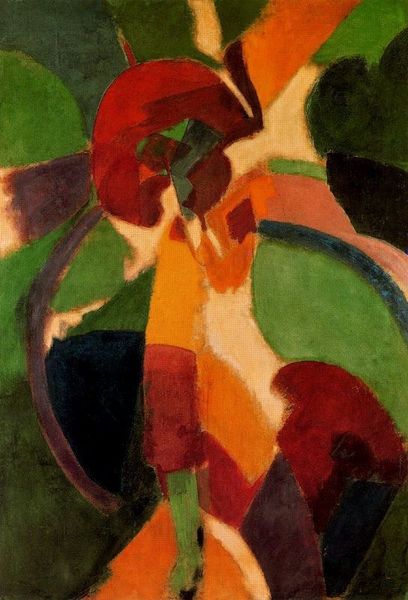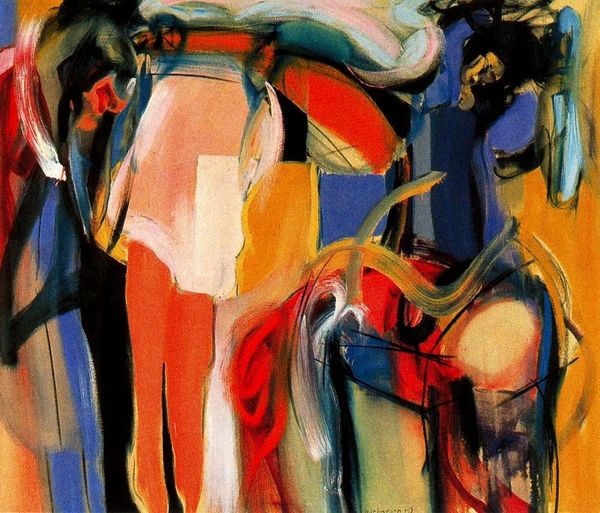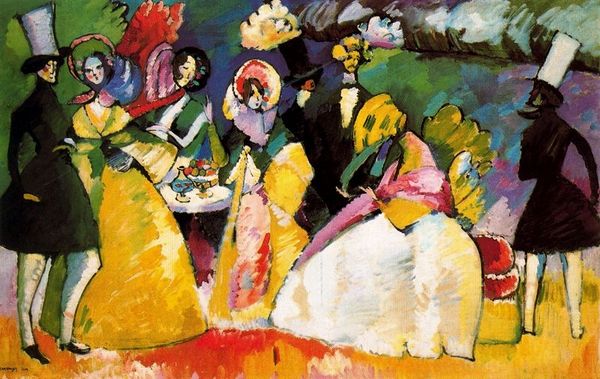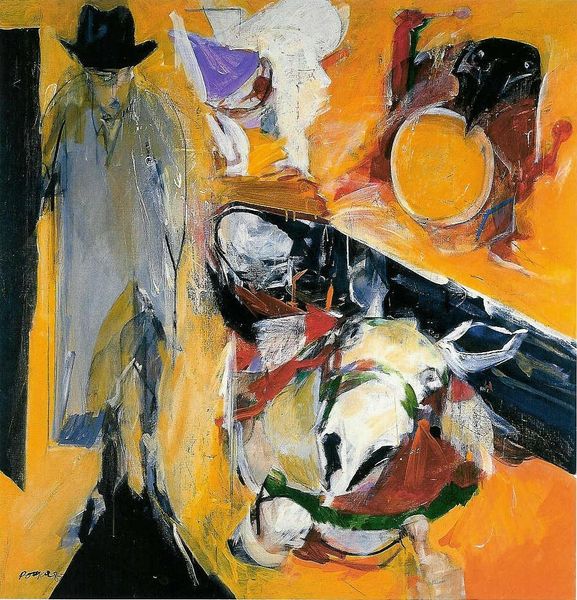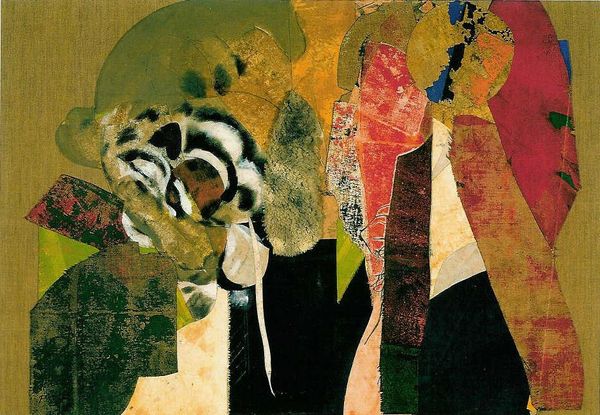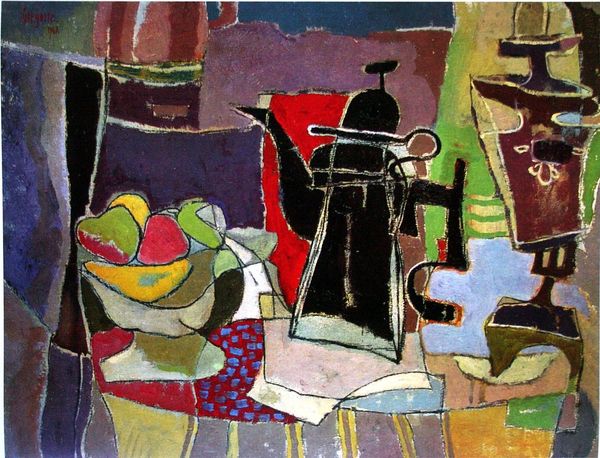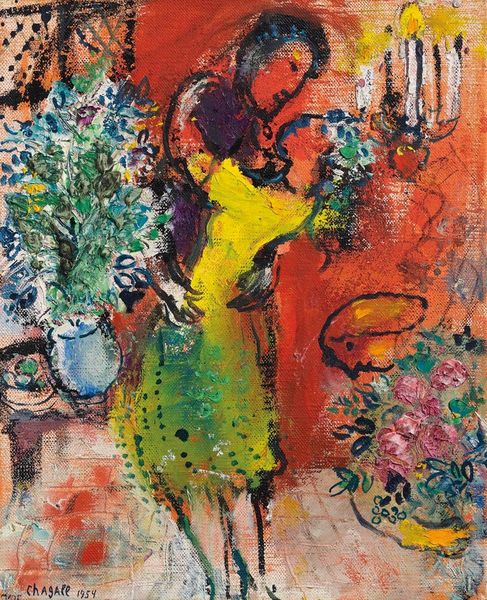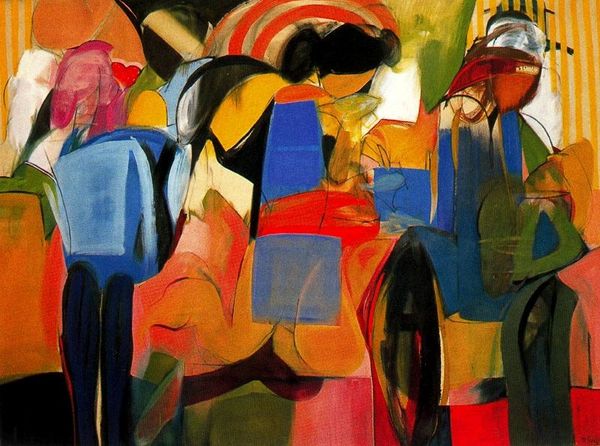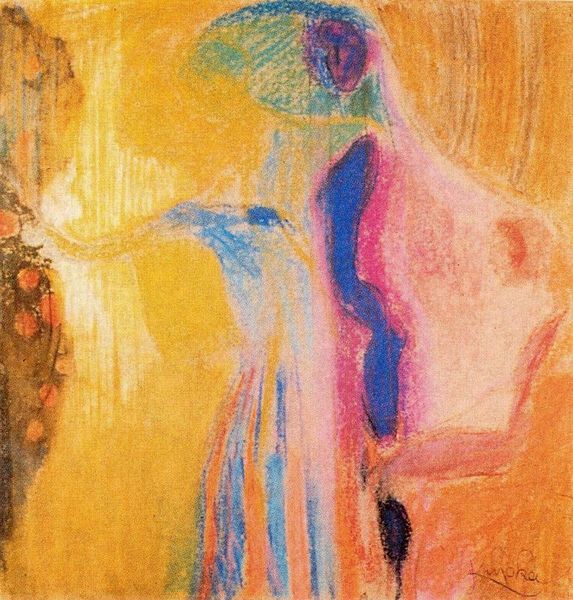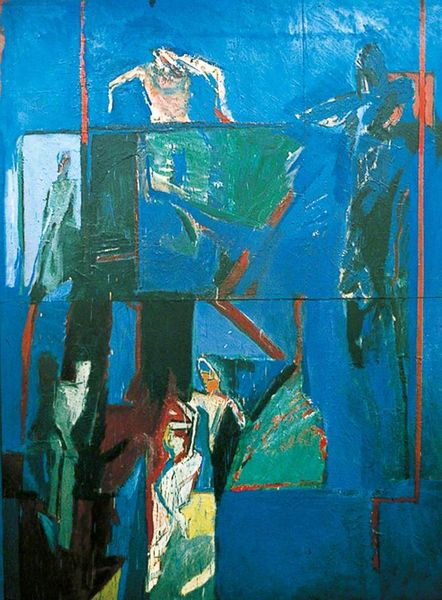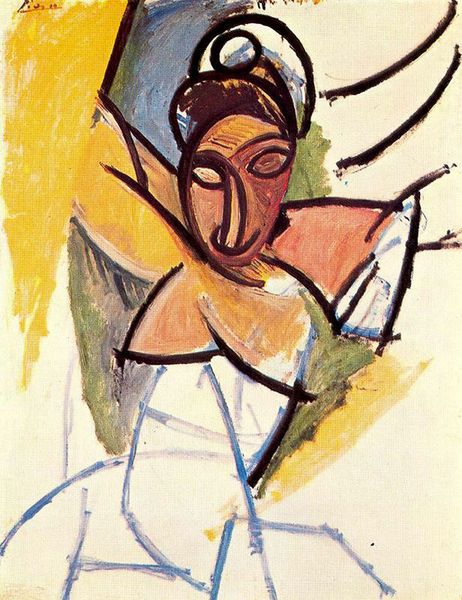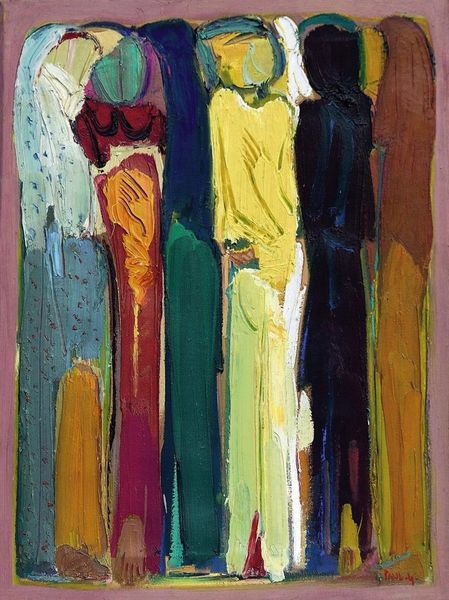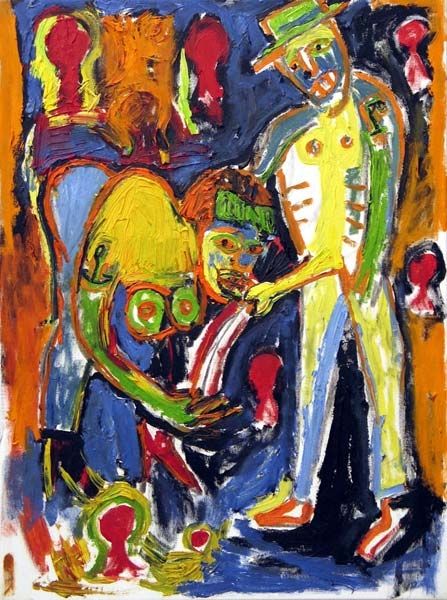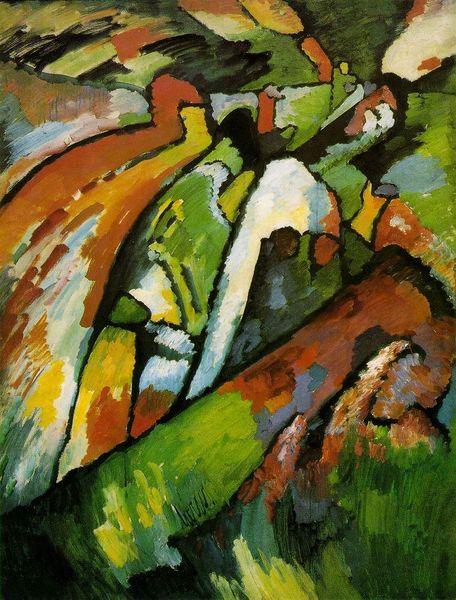
Copyright: Julio Pomar,Fair Use
Curator: Standing before us is Júlio Pomar's 1985 oil painting, "Edgar Poe, Charles Baudelaire, Um Orangotango e o Corvo." Editor: My immediate reaction is controlled chaos. The palette is unexpectedly vibrant, yet there's a murky, almost depressive air hanging over these... portraits? Curator: Indeed. Pomar creates an imagined meeting, a visual conversation between Poe, Baudelaire, and their dark companions. The Neo-Expressionist brushstrokes almost violently bring these figures together. Editor: I'm drawn to the materiality of it. The thick impasto of the oil paint seems almost sculptural in places. You can feel the artist’s hand, the labor, in the swirls and jabs of color. Did Pomar have a specific surface treatment in mind when composing this? Curator: Pomar's political involvement often subtly seeped into his work. Remember, 1985 was a time of social change and turbulence. While this may appear as merely a portrait, it may symbolize something far more, with this symbolic encounter carrying meaning for the era. Editor: Fascinating. Knowing this, it shifts my perspective. I see it less as an aesthetic exercise and more as a tangible record of a moment in history. It's about the act of making itself. How the application of paint, the layering of ideas, speaks to a specific social and creative environment. Curator: Precisely. Pomar brings into dialogue literary figures famous for questioning societal norms. The very act of depicting these transgressive artists can be viewed as an assertion of artistic freedom within the evolving Portuguese context. Editor: I still find myself pondering the orangutan and the raven. The non-human presences underscore a kind of existential questioning that art like this enables—confronting mortality and our relationship to the animal. Curator: It speaks to Pomar's keen understanding of art history and the legacy of modernist painters. A symbolic dialogue across centuries between art and sociopolitical discourse, as a call to a critical awareness in a time of transitions. Editor: Well, that really made me think differently about the physical act of its creation, of the oil and canvas becoming something more meaningful through social conditions and by the hands of the artist. Curator: And hopefully, through our discussion, it's provided an additional lens to better consider and understand Pomar’s contribution within a complex political, cultural, and intellectual landscape.
Comments
No comments
Be the first to comment and join the conversation on the ultimate creative platform.
